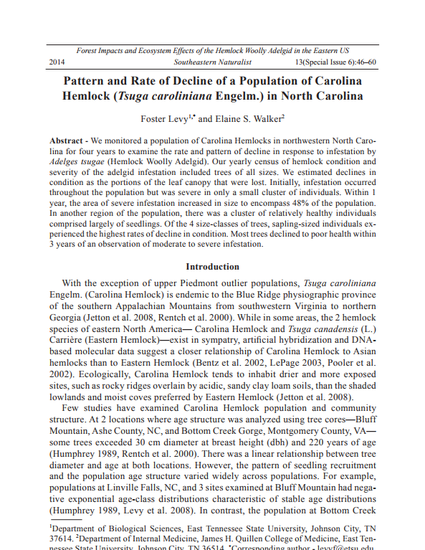
We monitored a population of Carolina Hemlocks in northwestern North Carolina for four years to examine the rate and pattern of decline in response to infestation by Adelges tsugae (Hemlock Woolly Adelgid). Our yearly census of hemlock condition and severity of the adelgid infestation included trees of all sizes. We estimated declines in condition as the portions of the leaf canopy that were lost. Initially, infestation occurred throughout the population but was severe in only a small cluster of individuals. Within 1 year, the area of severe infestation increased in size to encompass 48% of the population. In another region of the population, there was a cluster of relatively healthy individuals comprised largely of seedlings. Of the 4 size-classes of trees, sapling-sized individuals experienced the highest rates of decline in condition. Most trees declined to poor health within 3 years of an observation of moderate to severe infestation.
Available at: http://works.bepress.com/foster-levy/4/

Copyright of Southeastern Naturalist is the property of Eagle Hill Institute. This document was published with permission from the journal. It was originally published in the Southeastern Naturalist.